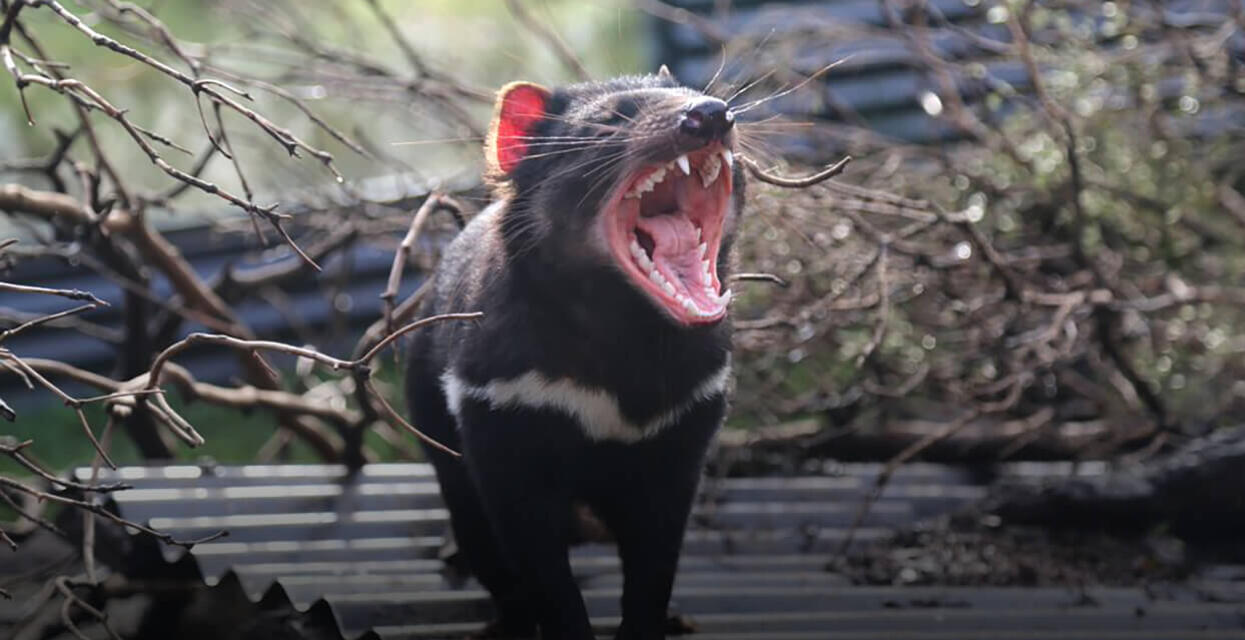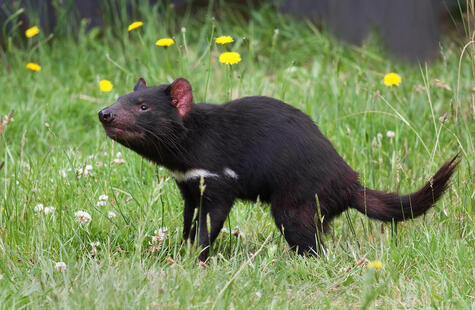Conservation Status: IUCN Red List - Endangered
Threats to Survival: Disease; vehicle strikes
A Devastating Disease
Devil Facial Tumor Disease, an infectious cancer that is nearly 100% fatal, is the primary factor causing the decline of the Tasmanian devil population. In 1996, before the disease arose, the Tasmanian devil was not a species of conservation concern. Since the late 1990s, the devil population has declined by nearly 85%, and is considered today to be endangered.
A Key Partnership for Devil Conservation
San Diego Zoo Wildlife Alliance is sponsoring a postdoctoral fellowship at the University of Sydney focused on Tasmanian devil genetics. Using next-generation techniques, this project is comparing the diversity of devils in zoos and breeding facilities throughout Australia with their counterparts in the wilderness. As part of the project, genomic regions involved in immunity, reproduction, growth, and behavior are being sequenced. This genetic information will be integrated into the management of populations to ensure the overall genetic health of the species. The gut microbiomes of devils are also being studied to better understand the potential impact of intensive management on endemic microflora. This collaborative project is developing the first landscape-scale management plan designed to save Tasmanian devils in the wilderness by applying laboratory conservation work directly to the field.
Improving Reintroduction Success
In an attempt to increase post-release survival, our Recovery Ecology team is testing ways of dampening dispersal of released devils when they are first returned to the wild. To reduce aggression and encourage settlement, we are working on methods to introduce wild devils to newly released animals by familiarizing them with the scent of their scat. To date, 28 devils have been released on Maria Island and 20 in Narawntapu National Park. An experimental vaccine developed for facial tumor disease is currently undergoing testing and evaluation.












